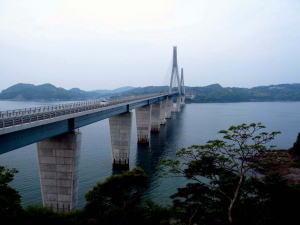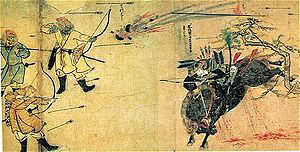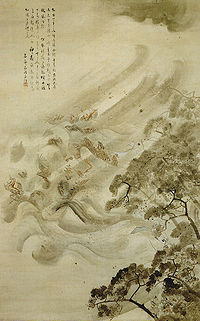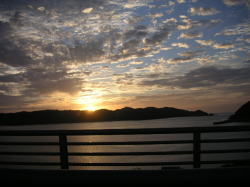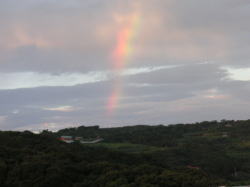|
||||||||||||
Kamikaze-The Divine Winds ―Mongol Invasion of Japan― |
||||||||||||
| Hi, friends. How were your typhoons? September was the typhoon season in Japan. Specially, Kyushu is always the routes for big and small typhoons every year. But this year, we were not attacked by huge ones, lucky enough. This month, I would like to talk about the typhoons which helped Japan from Mongol invasions. It is a history of 13th century. Legends remain here and there, and I visited this time Takashima, the Island of Hawk, that was one of the most severe battlefields of the time. So please read the history. |
||||||||||||
These invasions were major military invasions and conquests undertaken by Kublai Khan to take the Japanese islands after the capitulation of Goryeo. The attempts were ultimate failure, but they were the biggest earthquakes to shake Japan's history.
Korea's crown prince was made to marry Kublai's daughter and thus Goryeo's navy become Kublai's military. . Goryeo advised Kublai that Japan should be taken, and in 1266 Kublai dispatched his first emissary with a letter to threaten Japan to become a vassal and send tribute. But the emissary returned empty-handed. A second set of emissaries were sent in 1268, but this time again, they returned empty-handed. Several times between 1269 and 1274 emissaries were sent, but each time they were sent away. Japan at that time was ruled by Hojo Tokimune, and he did not know what to do. Japan was trembling, and praying God for protection. Kublai founded Yuan Dynasty in 1271. Finally, in 1274, the Yuan fleet set out. 23,000 Mongol, Chinese and Korean soldiers with 700-800 ships. They ravaged the islands of Tsushima and Iki. The whole population was killed savagely. One or two Samurais were sent to tell the general of Kyushu that the Mongol fleet had come. After Tsushima and Iki islands, they attacked a smaller island just close to the coast, Takashima, which means the Island of Hawk.. Takashima and the coast, Hizen Town, now a part of Karatsu city, were completely defeated, and the master of the clan of this district, with his three sons, died on the same spot. After this district, the Mongol fleet moved to Hakata Bay, and there were horrible battles. Many Japanese people were killed, houses burned, and women were captured as slaves.
After this, Kublai sent 5 emissaries to Tokimune ordering that Tokimune should surrender, but those emissaries were sent back beheaded. Under Tokimune's order, every shrine and temple in Japan prayed for victory over the Yuan. 7 years after the first attack, in 1281, the Yuan sent a bigger fleet. In total, 140,000 Mongol, Chinese and Korean soldiers, on 4500 ships! First 40,000 Koreans as advance party, and 100,000 Mongol and Chinese as back up group. Tokimune had made his samurais in Kyushu prepared for the next attack. Even information was known as for the strategies of Yuan Fleet. On the coast line of Hakata Bay, two meter high stone walls had been constructed. Yuan soldiers could not land easily before the arrow rain from behind the stone wall.
Then the massive typhoon came again. It assaulted the shores of Kyushu for two days straight, and the Yuan lost most of the ships and the soldiers. This time again, the Yuan failed. Thus, Japanese people began believing that the God had sent these storms. So these winds were called "Kamikaze", which literally means "God's wind". In the history of Japan, this idea of God's wind led Japanese mentality to a wrong direction, I am afraid. Still now, typhoons come in each late summer and fall, and their scales are getting more monstrous because of the greenhouse effect. If a typhoon is really a "Kamikaze", I believe that this is not the God's will to protect this small Japan, but it is a towering rage of the God against the whole human race.
On the day I visited the island, I saw some unforgettable things. A hawk! just in front of our driving car, and on both sides of the bridge, a huge rainbow and the sunset at one time. God is there, I believed. Thank you for visiting this page. I hope I can see you again next month. |
||||||||||||
|
||||||||||||
